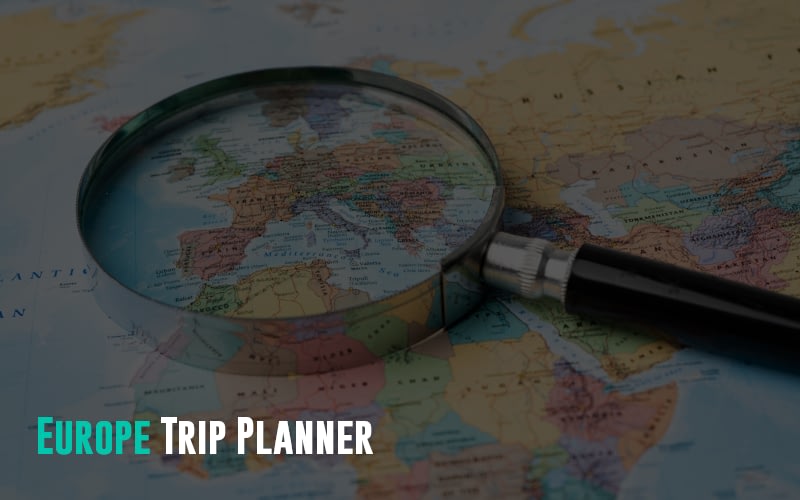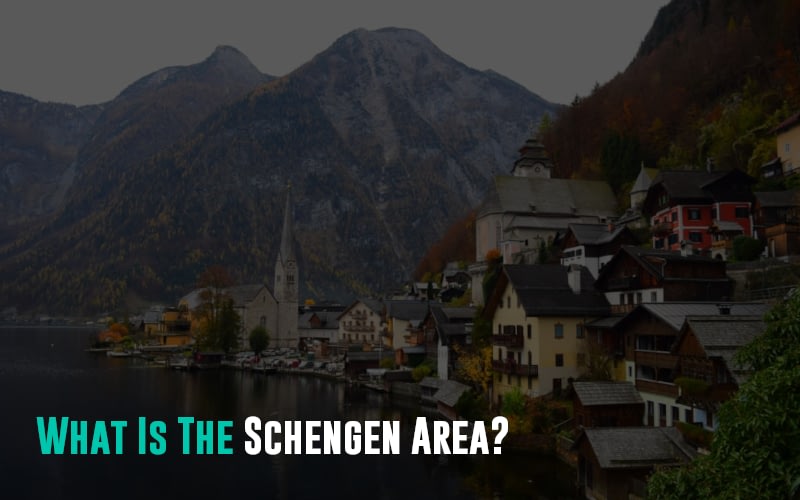Why visit Europe? Europe is a continent filled with many countries with rich heritage, culture, and history. Best of all, they are all fairly close together and, with the European Union’s Schengen visa system, easier than ever to visit. Europe comprises 44 countries, and the European Union is joined by 27. Among its ranks are the smallest country in the world, the Vatican City. Europe is known for its many castles, elaborate churches, rich art heritage, and a wide variety of things to see and do within proximity to civilization.
Welcome to our comprehensive guide dedicated to travelers, the Europe Trip Plan. Rich in historical heritage and full of popular tourist attractions, visit Europe if you want to create a lifetime trip.
Featured Photo 197166345 © Chormail | Dreamstime.com
Fun Facts About Europe
- Europe has 44 countries, including Finland, Germany, and France. The smallest country in the world, Vatican City, is also in Europe.
- The most visited tourist attraction in Europe is the Louvre in France. You can see famous works of art at the Louver, like the Mona Lisa.
- The largest Church in the world, the St. Peter’s Basilica in Vatican City, is in Europe. With room for over 60,000 people, St. Peter’s Basilica is also known for its beauty.
- Do you love castles? If you do, then consider visiting the Czech Republic. This country is known for having the most castles in Europe, with over 932 castles.
- More than two hundred languages originate from Europe. Only 24 of these have been recognized as official languages. English is the most commonly spoken in Europe, with nearly 38% of people knowing how to speak it.
What Is The Schengen Area?
The Schengen Area consists of 27 countries that agreed on creating standard requirements for entering and exiting different European countries. This was done so that the need for internal borders could be removed. If travelers can meet the Schengen entry requirements, they can freely travel between the participating countries without dealing with border control each time.
The countries that fall within the Schengen Area include:
- Belgium
- Austria
- France
- Czech Republic
- Croatia
- Estonia
- Denmark
- Finland
- Greece
- Germany
- Latvia
- Slovakia
- Hungary
- Lithuania
- Iceland
- Netherlands
- Italy
- Norway
- Liechtenstein
- Luxembourg
- Poland
- Malta
- Slovenia
- Sweden
- Spain
- Switzerland
- Portugal
How Does Schengen Visa Help With Traveling In Europe?
There are standard visa rules in the Schengen Area at several external borders. Here, you won’t find separate checks at internal borders as well. If you’re visiting certain Schengen area countries, you may be expected to register with the local authorities after arriving. This especially applies should you be staying at a private accommodation. You must get your passport stamped when you first enter the Schengen Area. You need to get your entry stamp from the Schengen country you entered through. If you don’t have your entry stamp, you may get into trouble with immigration officials when leaving the Schengen Area.
You can travel anywhere within the Schengen Area if you get your entry stamp. The only exceptions to this are if a country reintroduces internal border controls through the Schengen Borders Code.
Top Destinations In Europe
If you’re working on your Europe trip plan, you may wonder which destinations you should add to your template. In Europe, you’ll find a blend of history with the present. Preserved buildings have been decked up with modern amenities for modern Europeans. There are also large mountain ranges, gorges and valleys, and picturesque countryside to explore. But which destinations should you add to your free Europe trip plan? Here are five destinations for you to consider.
1. Italy
When people think of Italy, they often think about Italian food. Shaped like a boot, this country’s history is one of the most well-documented in the world. In Rome, you’ll find attractions like the Pantheon and the Colosseum. Italian town squares are something that should be marveled at as well. The Piazza Navona, the Piazza Spagna, and St. Peter’s Square are famous among these. Florence is another city that you should consider visiting. Here, you’ll find the Duomo and the Ponte Vecchio Bridge. Florence is known for having a large number of museums as well.
If you visit the Italian countryside, you can enjoy everything from hiking, skiing, swimming, and more. Tuscany is known for its historical towers and walls, and the Amalfi Coast is a vision you won’t forget. Between March and June, summer is the best time to visit Italy. You’ll need at least five days to travel through the top Italian cities.
2. Spain
Add Spain as the next destination to your free Europe trip plan. Spain is picturesque and known for large architectural buildings, sea-facing cliffs, mountain ranges, hilltop cameras, and more. Madrid, the capital of Spain, is also the most populated city in this country. When you’re in Madrid, visit the Crystal Palace. Then, make your way over to Seville. Here, visit popular attractions like the Catedral de Sevilla. You should also visit Real Alcazar, a UNESCO World Heritage Site. Visit the Plaza De Espana as well. In Barcelona, visit the Casa Mila. Finish your trip around Spain in Valencia, well-known for its superb sea views.
Traveling through the destinations mentioned in this guide will take at least three to four days. If there are other places that you want to visit, your trip should be extended. Visit Spain between May and August and between September and November to make the most of your time traveling here.
3. France
A country well-known for its natural beauty, fashion, food, art, and culture, you must add France to your Europe travel itinerary template. Visit the French Rivera, where you can relax under the rays of the Sun. In Provence, you’ll be awestruck by the fields of beautiful flowers. When you go to Normandy, remember to visit the Mont Saint-Michel, a UNESCO-listed islet. If you like skiing, destinations like Meribel and Chamonix could be perfect. Here, you can go skiing in the French Alps. Visit the Champs-Elysse to enjoy the scenery and eat at one of the many well-regarded restaurants. Visit the Eiffel Tower or walk along the River Seine in Paris.
France is beautiful at any time of the year, but its beauty truly shines in summer. Visit France between April and July and take in the beauty of this country. You’ll need at least a week to go through France and truly take it in.
4. Sweden
In Sweden, you will find walled cities, sandy beaches, beautiful lakes, mountains topped with glaciers, and other visions of natural beauty. If you want to view the famed Northern Lights, visit Sweden. You can go hiking through the Swedish woods, canoe on rivers, and even camping. Stockholm is the most happening city that you’ll find in Sweden. When you’re in Stockholm, visit the Vasa Museum. Don’t miss out on visiting Skansen, either. This open-air museum depicts life in Sweden between the 1720s and 1960s.
You should also visit Gothenburg, especially if you love beaches. Visit Sweden around spring, between March and June, to truly enjoy the natural beauty of this country. Three to four days is enough for a short trip to Sweden, especially if you visit multiple European countries on the same trip.
5. Switzerland
The Matterhorn and Lake Geneva are Switzerland’s most famous natural landmarks. If you like canoeing, kayaking, water rafting, or even fishing, then you’ll love visiting Switzerland. There are small villages, like Gimmelwald, that look like something out of a storybook. There are larger cities as well, such as Geneva and Zurich. You should visit Lucerne as well, as well as Bern, the capital city of Switzerland. Visit Switzerland during summer to take in the natural beauty of this country. You’ll need around four to five days to travel around Switzerland properly.
What Do You Need To Do Before You Visit Europe?
First, you need to determine which countries you want to visit and how deeply you’d like to explore them. This should give you a base outline of where you want to visit. You can use Travel-Wise’s trip planner to create sketches of your trip plans as a starting point. Further, we also include very detailed breakdowns for various countries in our country travel guides. The guides also will have detailed information on getting visas and ensuring you have the required documentation ready. The Schengen visa will be needed for many European countries you’ll visit.
Remember to pack for where you’re going. If you intend to go skiing, you’ll need winter clothes. If you plan to go water rafting, you’ll need to pack a few sporty outfits. If you’re more interested in visiting cultural destinations, you can bring casual and formal outfits. Knowing where you want to go can help you with packing for it.
Is It Safe to Travel in Europe?
The culture of Europe is warm and welcoming. While you need to be cautious of your surroundings in crowded areas and at night, you can generally get by without worrying about your safety. Europe is also an excellent destination for solo travelers. You must protect your belongings in crowded areas like Italy. Pickpockets are not unheard of. The safety infrastructure of Europe is vital, and you can always turn to the police or local authorities if you run into trouble.
Is Tipping Customary in Europe?
Tipping is customary in Europe, and you may need to pay 10% to 15% of the bill as your tip. It varies from country to country, but 10-15% of restaurant fees are a good baseline. Consider 10% as a good baseline for tour guides. Taxi culture varies significantly, so do research on this per country, usually rounding up, and a few extra dollars is sufficient; however, some countries like France prefer 10%. One notable exception to this is Iceland and the Scandinavian countries that do not believe in tipping, and tips are usually not expected and may be rejected.
One-Week Budget Range for Traveling in Europe
Europe can be budget-friendly and great for hitchhikers and even solo travelers. Most European countries have hostels that provide affordable places to stay for travelers. You could also stay at top luxury destinations, especially in France and Switzerland. It will vary per country and area, but we’ll give a rough guide for cost expectations per person. Expect to spend at least around $2000 every week. How much you’ll need to spend will depend on the country you’re visiting. Some countries, like Switzerland, are more expensive than others. To experience a luxurious time in Europe, aim to create a budget of $5000 per person weekly.
Conclusion
From the beer festival in Berlin to exploring Naples, there’s a lot you can do in Europe. Get help from Travel-Wise with exploring other unforgettable destinations in Europe.
To make your planning efforts easier and worthwhile, why not try our quick and easy AI itinerary generator? If you want to know more about your favorite destinations from a fellow traveler’s point of view, check out our travel community’s itineraries. Prepare for your travels with our Country Guides, where you can find valuable and critical information about your chosen destination.
Travel-Wise helps you plan your trip fast, organize it, make bookings conveniently, journal your experiences, and share them with our travel-loving community. Choose your dream destination today!








